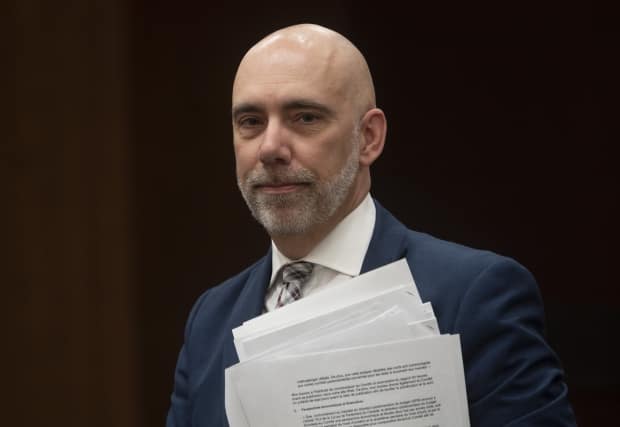Long-term care improvements would cost $13.7 billion, PBO says

Governments would have to double their spending on long-term care to implement a range of improvements proposed over the course of the COVID-19 pandemic, a new report from the Parliamentary Budget Officer says.
The report says that public spending on long-term care across federal, provincial and territorial governments would have to increase by $13.7 billion at first, and that costs would grow at 4.1 per cent per year thereafter because of an aging population.
In 2019-20, governments in Canada spent $13.6 billion on facilities-based long-term care.
The report was prepared at the request of Green MP Paul Manly, whose Motion 77 (M-77) proposes a number of changes to long-term care services in Canada. They include providing long-term care to anyone who needs it, increasing pay and benefits for long-term care workers in the private and non-profit sector, mandating four hours minimum of direct care per resident per day and increasing spending on home care to 35 per cent of total public spending on long-term care.
Thousands of Canadians have died in long-term care homes during the COVID-19 pandemic, leading to widespread calls for changes. During the first wave of the pandemic, from March to August 2020, long-term care residents made up over 80 per cent of all COVID-19 deaths, according to the Canadian Institute for Health Information.
"The number of residents in long-term care is expected to rise due to population growth, population aging and changing socioeconomic circumstances of the elderly," the PBO report says.
That rise in demand is expected to increase the cost of the changes to $17.5 billion by 2025-26, according to the PBO report.
Most of increased cost borne by provinces
The report estimates that 205,000 people in Canada lived in long-term care in 2019-20, with 52,000 on waiting lists.
The report says most of the burden of any increase in spending would fall on the provinces. Of the $13.6 billion spent on long-term care in 2019-20, $13.2 billion was direct spending by provinces, says the report.
"We assume the direct cost would be primarily borne by provincial and territorial governments, although federal transfers could be increased to cover a portion of the incremental costs," it says.
And cash-strapped provinces may look to Ottawa to pick up the slack.
Provision of long-term care is the responsibility of the provinces and territories, and the report notes that the federal health transfer does not specify an amount for long-term care.
About $43 billion in health care spending is covered by the federal government — an amount premiers have said they want to see increased. They've called on the federal government to increase transfers by $28 billion, which would increase the federal share of health care spending to 35 per cent of the total.
With an election campaign expected later this year, health transfers for services like long-term care may become a campaign issue.
In a statement, New Democratic Party health critic Don Davies called on the federal government to increase funding for long-term care.
"The PBO report makes it clear that there must be serious investment from all levels of government in long-term care," he said. "The federal Liberal government should help fund these changes through the Canada Health Transfer immediately."
Earlier this year, the federal government announced that it would spend $3 billion over five years to establish new standards for improved long-term care in Canada.

